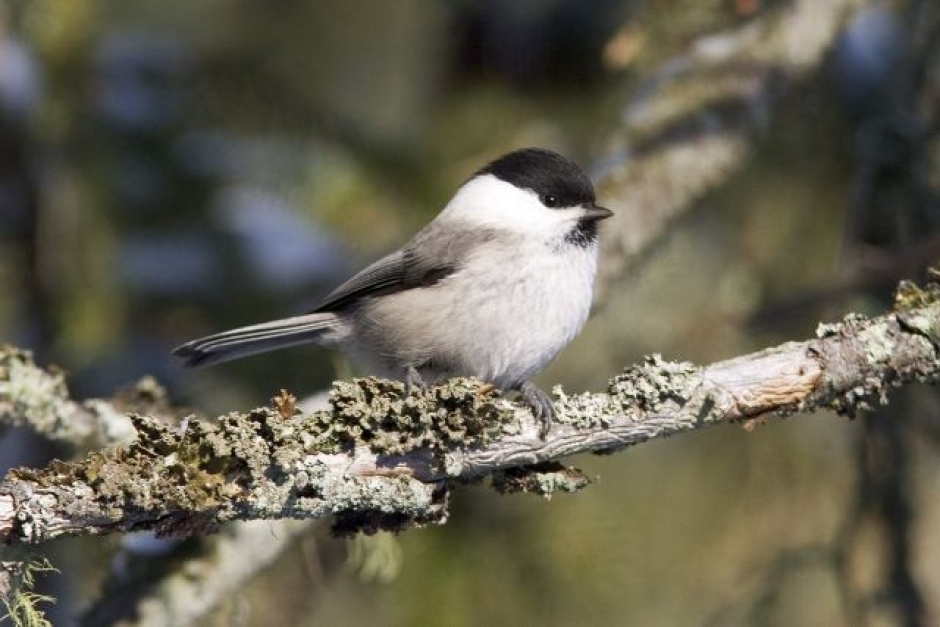Willow Tit
Parus montanus

General information. The nesting population of willow tits has declined during recent years. This is believed to be due to the same factors affecting other species of birds inhabiting old growth forests; fragmented living environments and declining surface areas.
- Length 13 cm
- Excavates a nesting cavity in dead trees
- Sedentary species
- Feeds on insects
Habitat. The willow tit is one of the species found in the coniferous forest belt and thrives in spruce and pine forests, provided that there are enough suitable trees for nesting. It lives in snags, usually a tall stump of a deciduous tree. The species also occasionally nests in more lush environments such as waterfront coppices.
Distribution in Vaasa. The willow tit occurs evenly distributed across the whole survey area. The species has been observed in about 215 survey blocks during the nesting season in April to July and nests in forest areas both on the mainland and in the archipelago. It is, however, absent in the densely built up city centre. It can be found in recreational areas like Öjberget and Pilvilampi, for example.


